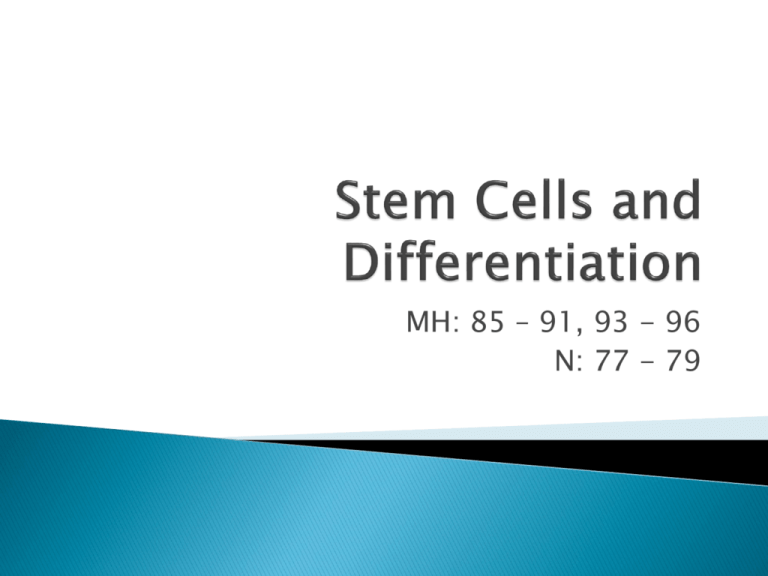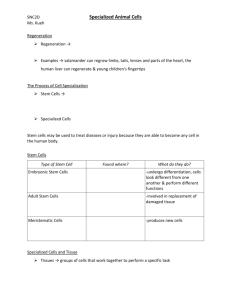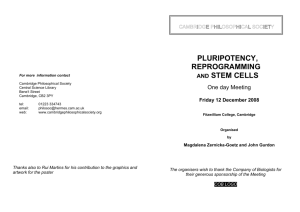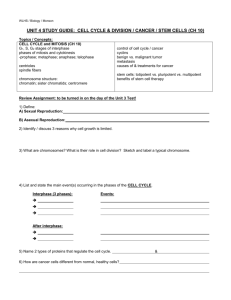Stem Cells and Differentiation
advertisement

MH: 85 – 91, 93 - 96 N: 77 - 79 In a single-celled organism, 1 cell is capable of every function needed to survive In multicellular organisms, survival is accomplished by groups of specialized cells vs Atoms Molecules Organelles Cells Tissues Organs Body systems Organisms Your body has similar needs to that of a city: ◦ Transportation ◦ Energy ◦ Waste disposal, etc. Similar to people working in a city, specialized cells have physical and chemical differences that allow them to perform one job really well In general, specialized cells give rise to similarly specialized cells ◦ eg. a lung cell divides to make 2 daughter lung cells But where did those first lung cells come from? And what about tissues that contain numerous cell types, like blood? Stem cells – cells that can divide and differentiate into diverse specialized cell types A stem cell’s ‘potential’ to differentiate is its potency, and there are 3 levels: ◦ Totipotency ◦ Pluripotency ◦ Multipotency Some stem cells have the ability to differentiate into ANY cell type (including embryonic tissues) these are called totipotent stem cells The only true totipotent stem cells exist in a developing zygote Some stem cells have the ability to differentiate into any ADULT cell these are called pluripotent stem cells Pluripotent stem cells come from ◦ developing embryos ◦ umbilical cord blood In 2006 scientists discovered that they could induce normal body cells (skin, lung, etc.) to become pluripotent Induced pluripotent stem cell (iPSC) research may be the future Dr. Gurdon & Dr. Yamanaka Some stem cells have the ability to only differentiate into related cell types (eg. blood) these are called multipotent stem cells These are often referred to as ‘blood stem cells’ or ‘skin stem cells’ because they can only give rise to cells of that specific line






